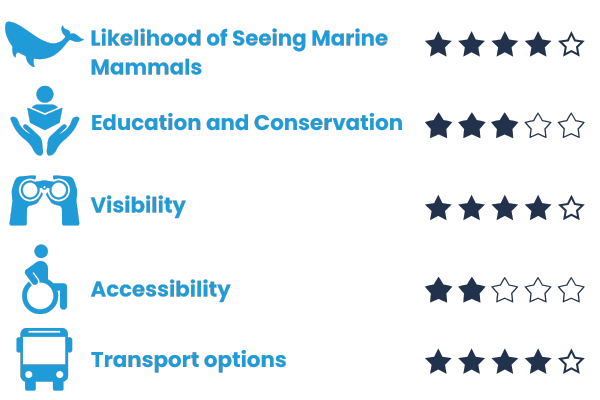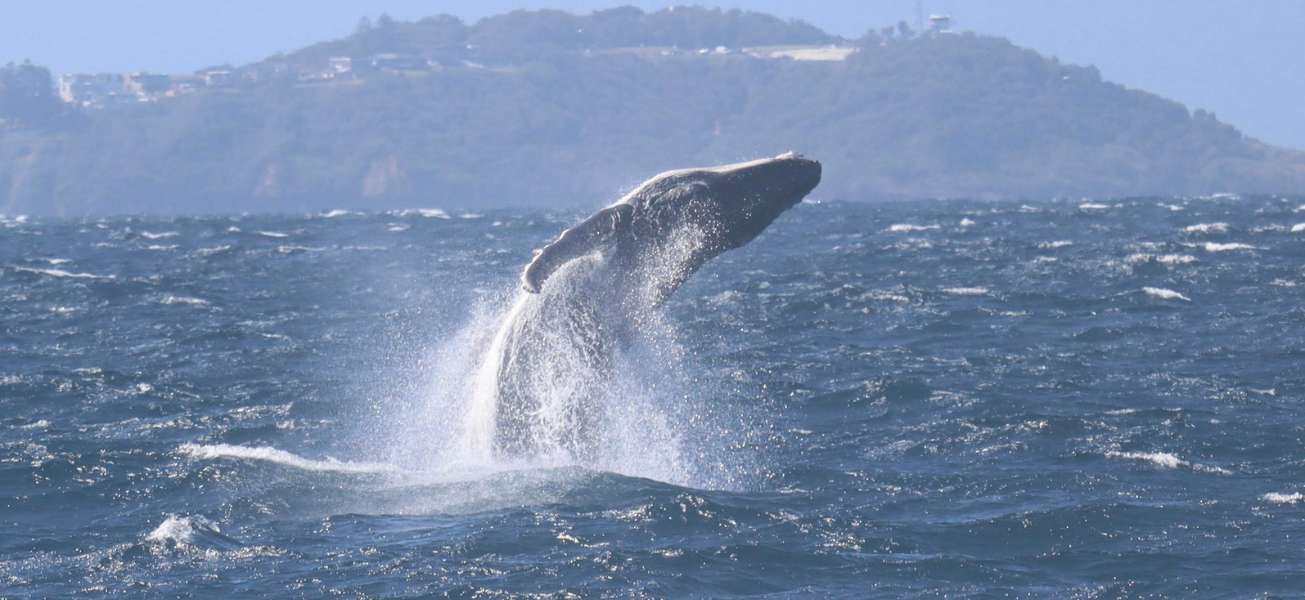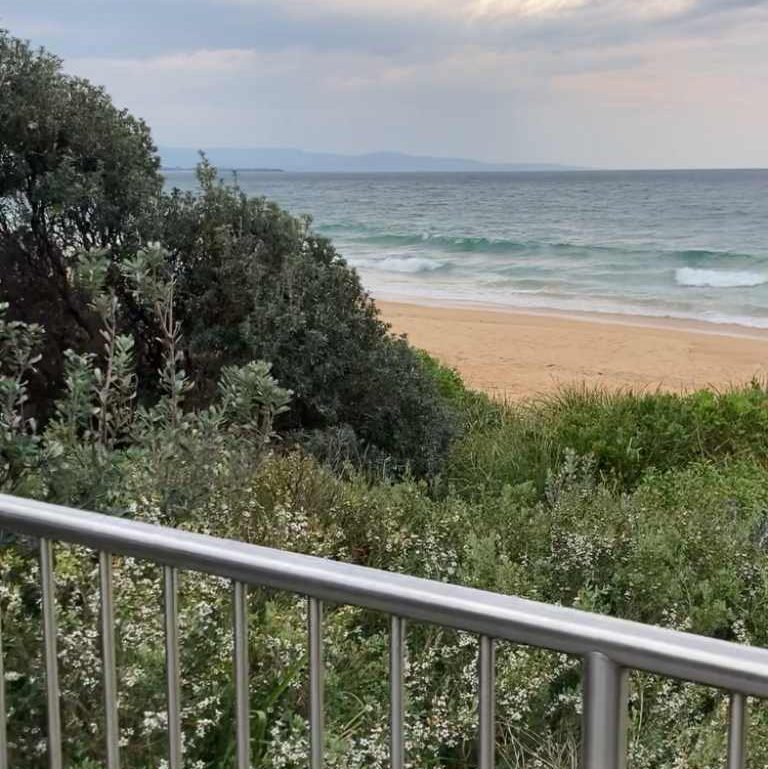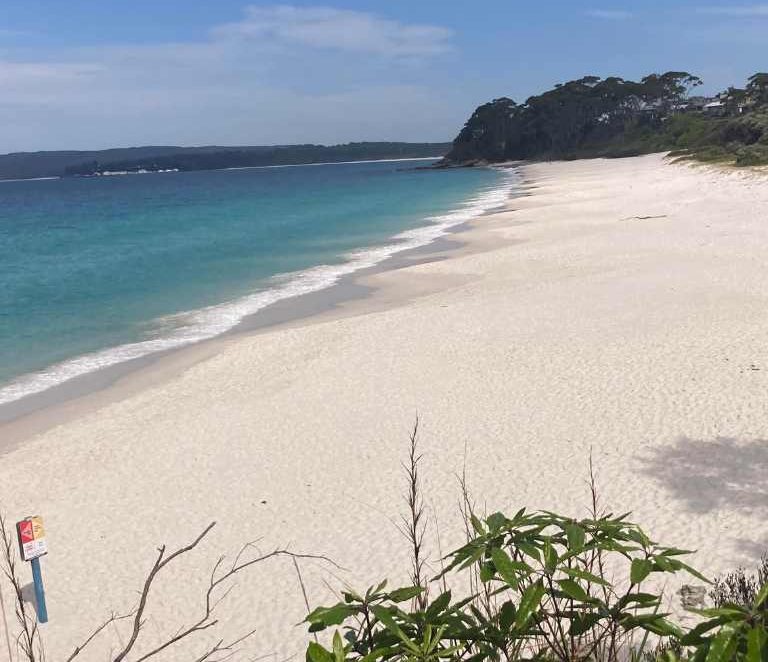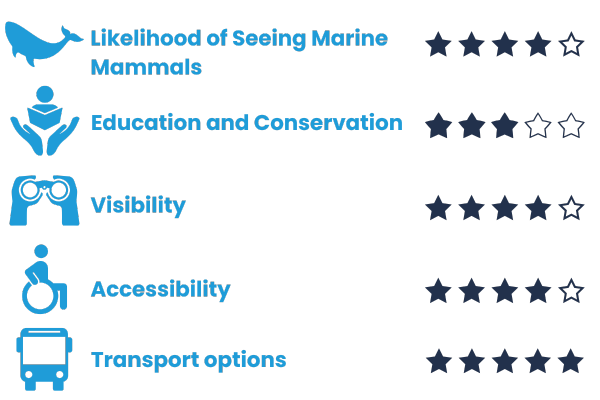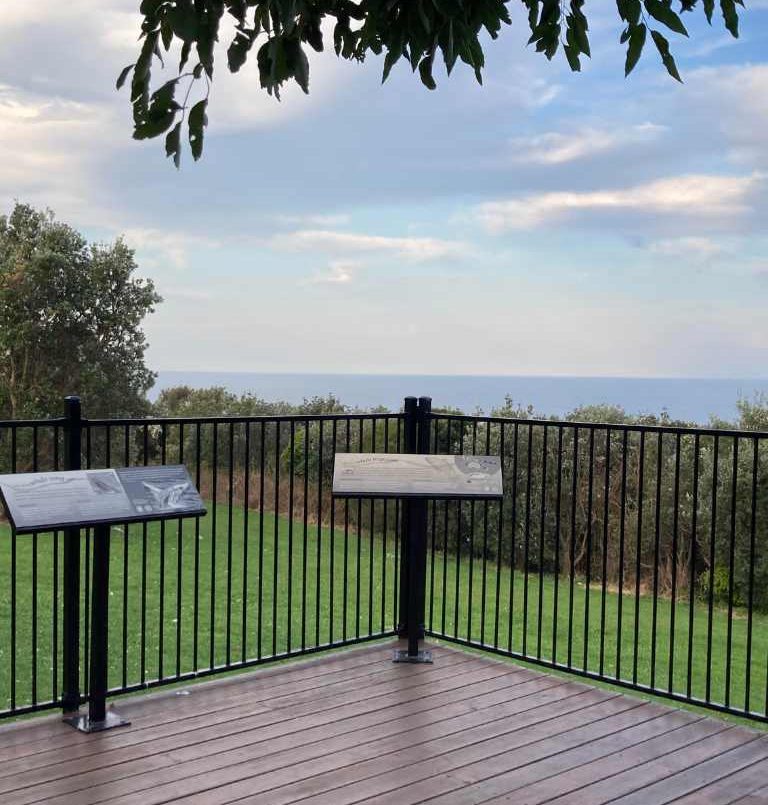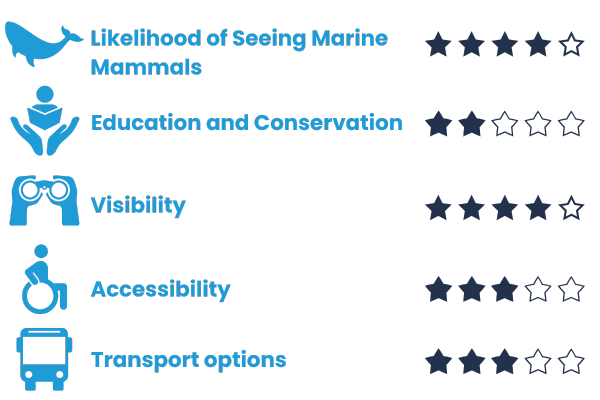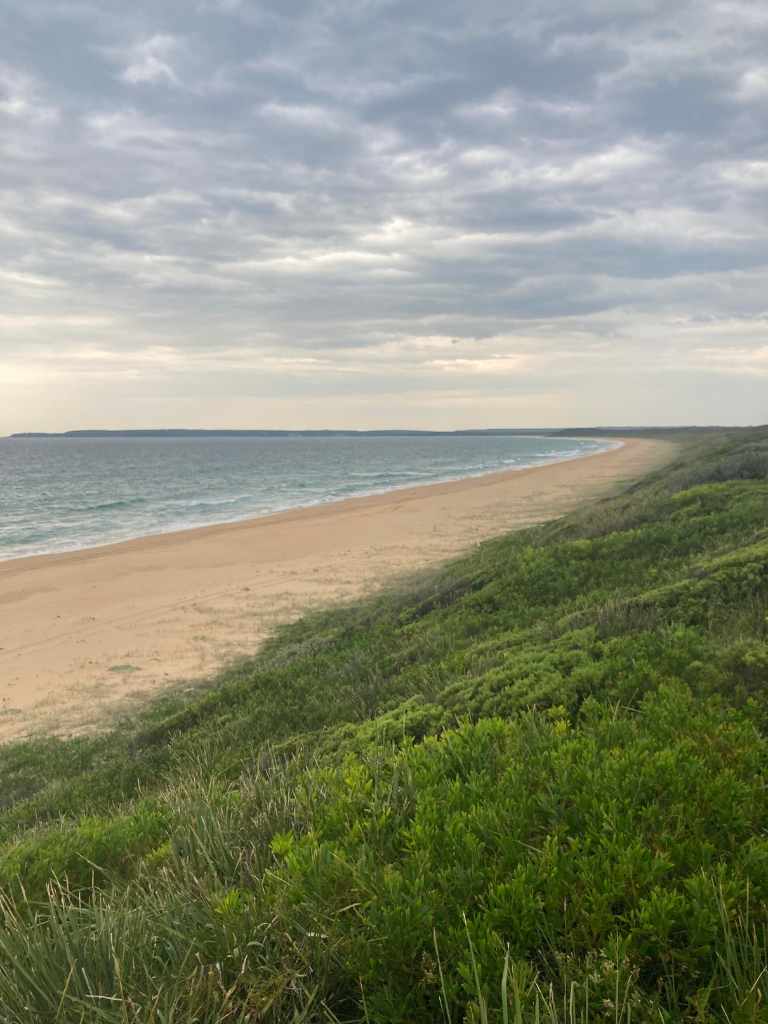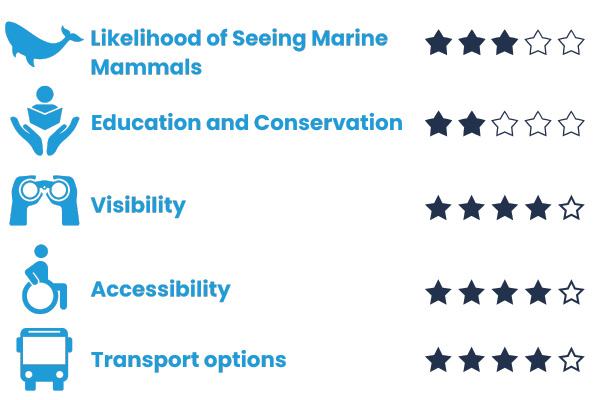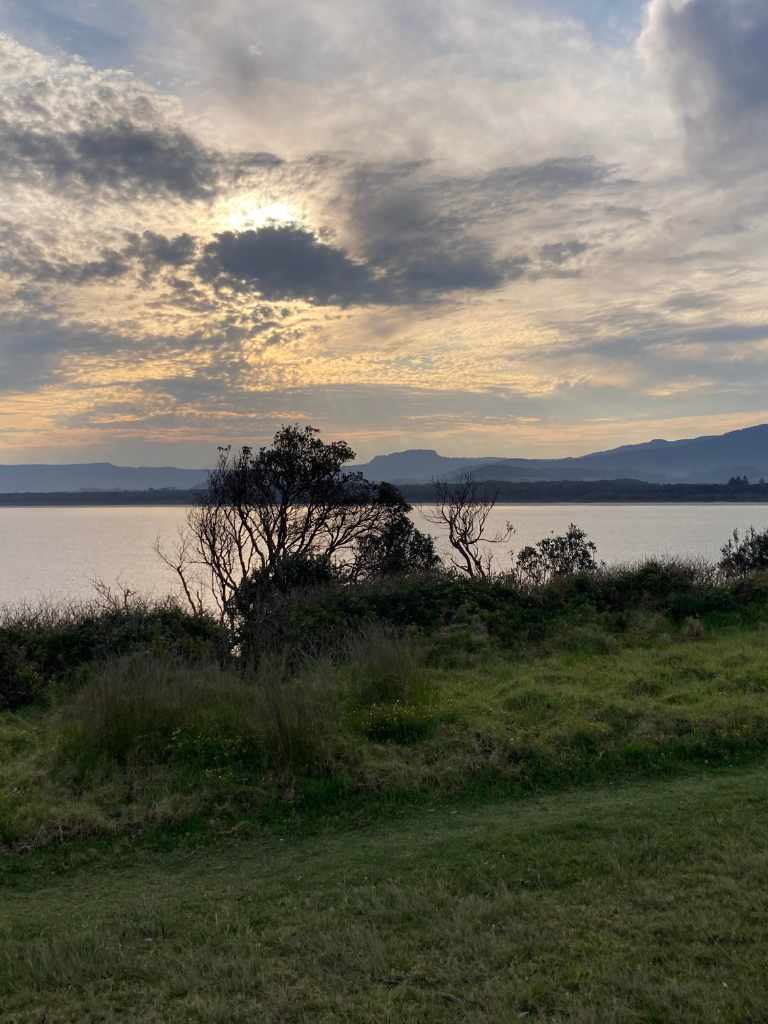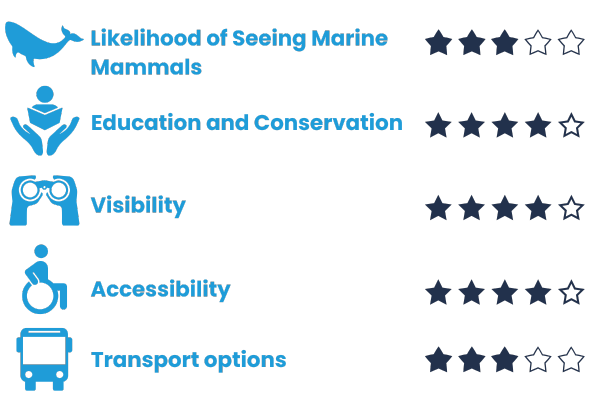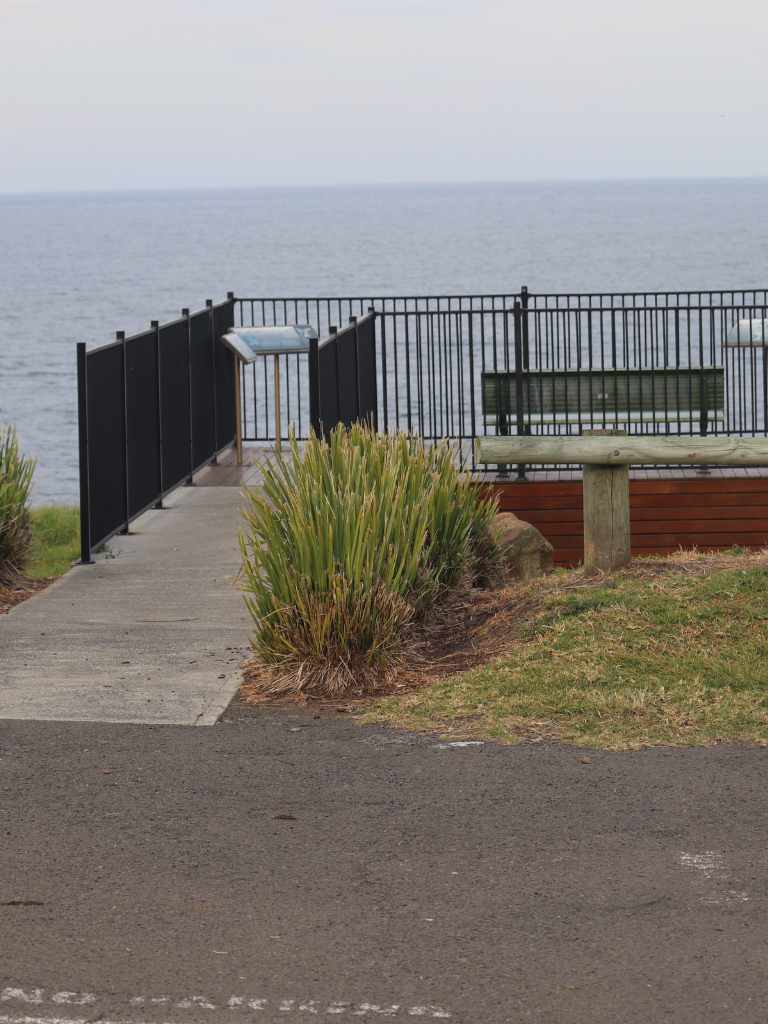Hammerhead Point Picnic Area in Jervis Bay National Park is a prime spot for whale watching Jervis Bay, offering a quiet, nature-immersed experience. This sanctuary zone is a safe haven for dolphins and migrating whales, making it one of the best viewing locations for marine wildlife in Jervis Bay.
A short, sandy track leads to the lookout platform, where visitors will find bench seating, a railing for support, and clear ocean views. The lookout provides expansive sightlines over the bay, with minor obstructions from shrubs to the north. Bottlenose and common dolphins are regularly seen close to shore, while humpback and southern right whales pass through during their annual migration, sometimes accompanied by calves.
The picnic area features tables, shaded seating, and parking, making it a great spot for a relaxed day of wildlife watching. While the sandy path may pose challenges for wheelchair users, the proximity to parking ensures relatively easy access for most visitors.
